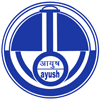| ABOUT THE BOOK : | Charakasamhita is a famous Ayurvedic text. It is one among the Brihatrayi. Present book contains Sutra, Nidana, Vimana, Sharira, Indriya,Chikitsa, Kalpa and Siddhi Sthana of Caraka Samhita.[BREAK]1.Sutra Sthana contains 30 chapters. First four chapters are related to Dravyaguna aspect (Oshada Chatushka). Various basic principles of Ayurveda and definitions are described. Fifty Mahakashaya grouping is the unique for this Samhita. Fifth to 8th chapter deals with Svastavritta part (Sutra Sthana chatushka). Daily and seasonal regimens, effect of restricting the natural urges etc are discussed. Ninth to 12th are Nirdesha Catushka. Role of physician, drug, causes of Diseases etc are discussed. Thirteen to 16th is Kalpana chatushka. Description about preparation for Panchakarma procedures etc is described. Seventeenth to 20the chapters is Roga chatushka. Types and etiology of various diseases are discussed. Twenty one to 24th chapters are called Yojana chatushka. Asthanindita Purusha, sntarpana, Apatarpana, Langhana, Brimhan etc are discussed. Twenty fifth to 28th are Annapana chatushka. Grouping of various foods like cereals, pulses, muttons, milk, oils, buttermilk of various animals and their qualities, Agroushada, description various Rasa etc. are explained. Last two chapters are Sangarhaniya chapters. Various basic principle of Ayurveda, briefing of Ayurveda and first 28 chapters are seen.[BREAK]2.Nidanasthan contains 8 chapters. General Panchalakshana Nidana, etiology, pathogenesis, types, prodromal symptoms, symptoms, prognosis etc of jvara (fever)is described in first chapter, same of Raktapitta, Gulma, Pramehs, Kushtha, Rajyakshma, Unmada and Apasmara are described in subsequent chapters.[BREAK] 3.Vimanasthana also contains 8 chapters. Many basic concepts of Ayurveda like Rasa (taste), Dosha, Aharavidhivishesha ayatana, properties of various types of Bhojan like Ushnabhojan, Snigdhabojan etc are discussed. Ama, Amavisha, Amadosha chikitsa, causes of Janapadodvamsa (epidemics), various types of Desha, 3types of perception viz. Pratyaksha, Anumana, Aptopadesha, various types of Srotas (channels) and their normalcy and abnormalities, causes of vitiation of Dosha, various types of worm infestations and their treatments, Characteristic features of various types of Prakriti, Ssara, list of drugs under Madhura, Amla, Lavana, Katu, Tikta and Kahaya skanda etc are discussed. [BREAK] 4. Sharirasthana also contains 8 chapters. It contains Ayurvedic anatomical and physiological descriptions. A detailed description of external and internal body parts, descriptions on Skin, various Asthi, Kala, Snayu, Peshi, Sira, Dhamani, Ashya, Srotas, their seats and properties are also described. Monthly care of pregnant, treatment of certain diseases of pregnant, pediatric house and pediatric care are explained.[BREAK] 5.Indriya sthana contains 12 chapters. It mainly describes of various good and bad omen and fatal signs.[BREAK] 6.Chikitsa Sthana contains 30 chapters. It starts with Rasayanchikitsa adhyaya and ends Yonivyapat chikitsadhyaya. Initial first two chapters are on Rasayan(rejuvenation) and Vajikarana (aphrodisiac) treatments and procedures. Remaining 28 chapters describes various herbal and herbomineral treatments of different diseases.[BREAK]7.Kalpasthan contains 12 chapters. It mainly describes about the drugs/Kalpa used as Vaman, Virechana etc. Various combinations of drugs along with the main drugs like Ikshvaku, Damargava, Aragvadha, Vatsaka, Trivrit, Lodra, Esvari etc. are explained in detail.[BREAK]8.Siddhi Sthana also contains 12 chapters. Procedures, types, suitable and unsuitable persons of Various Panchakarma procedures like Vaman, Virechana, Vasti, Dhumapana, Nasya etc are explained. Features and adverse effects of excess and low performances of these procedures and their treatments are explained in detail. |
|---|

